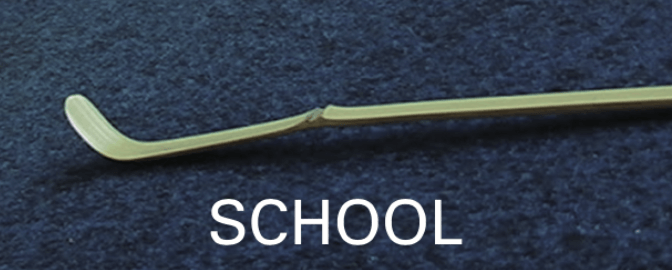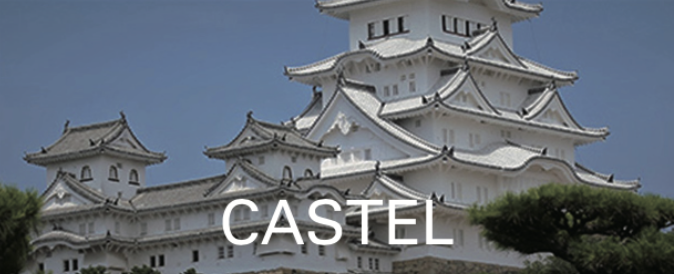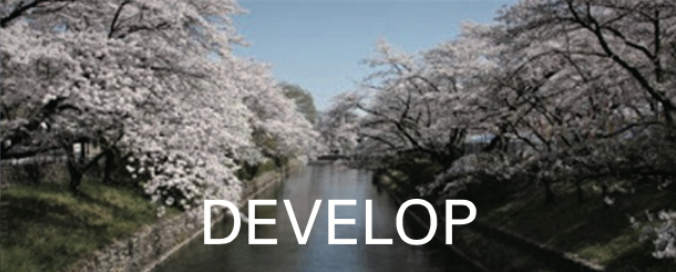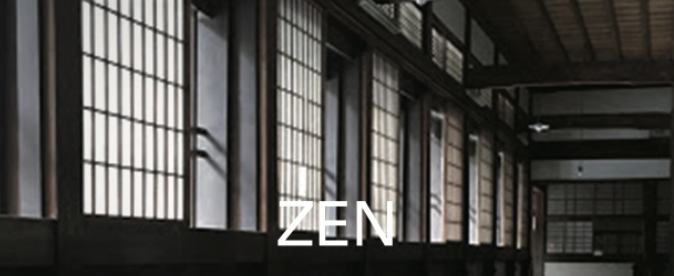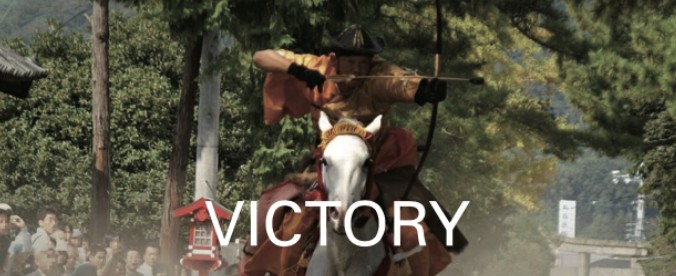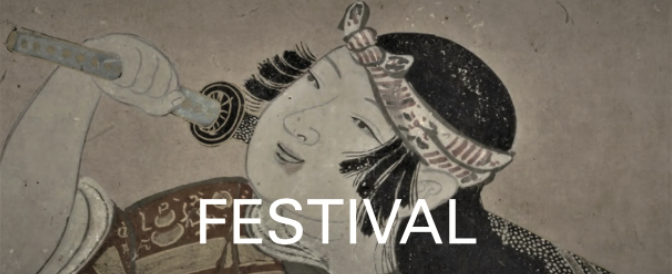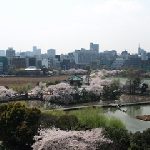
“Quiet from warding off evil spirits” The Tokugawa shogun, the military dictator and rulers of the country appointed by Emperor, founded this temple in 1625 during the Edo era. This temple was standing in the unlucky direction of an Edo Castle and Town, to ward off evil spirits. This temple worships the Buddha of healing, medicine and peace, and prays that those spirits are calm as the funeral temple of Tokugawa shogun.
This temple was founded with Enryakuji Temple and its landscapes in mind. Enryakuji Temple is on Mount Hiei, beside the Biwa Lake, Shiga Prefecture. It was a kind of Sango, an honorific mountain name prefixed to a temple’s name. The “Toeizan” in Toeizan Kaneji Temple, means “Mt. Hiei of the east,” Shinobazu Pond was designed as the Biwa Lake, and Bentendo Island was designed as Chikubujima Island in Biwa Lake, which is famous for Pilgrimages to Sacred Kannon: the Buddhist Goddess of Mercy, Site.

Chidori means migratory birds and the symbol is another name for Japan, Mizuho, the Land of Vigorous Rice Plants. This way is a trail of approximately 700 meters along the Chidori-ga-fuchi, the west side of the Imperial palace. Somei yoshino (Prunus yedoensis) and Yamazakura (wild cherry tree) and others are planted. In spring, from Chidori-ga-fuchi Park to Green way, it is one of Tokyo’s leading cherry blossom landmarks.
From the end of the Heian period to the Kamakura period, in the 12th–14th century, Tokyo was the transportation hub at the waterside for carrying supplies from Chichibu, Musashi country, to Kamakura.
The Chidori-ga-fuchi was created by dividing the Hanzo-bori Moat, made in the Edo period (1603–1868), into two, by the construction of a road in 1900.
The view is the remnants of Edo in the Medieval Ages, too.
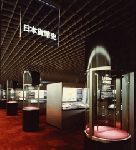
This museum exhibits various money from ancient times to the present day. It features mainly Japan money, but also Chinese and other East Asian money and related materials.
The core of the collection is the “Senpeikan Collection” collected by Tanaka Keibun, who was an ancient money collector and researcher since the late of the Meiji period (1868 – 1912). This collection was donated to the Bank to the Bank of Japan in 1944 to avoid loss due to the war fire.
And this museum opened in 1985 in commemoration of the Bank of Japan’s centennial anniversary (1982), in order to make the collection in public widely.

There are thickets, the waterway that lets fireflies grow, and a waterwheel, at the Mitaka Osawa Village, along the Nogawa River. The Tamagawa Water Supply was developed for supplying water to the urbanizing Edo, in the Edo period (1603 – 1868).
The Water Supply was divided to supply water for developing new rice fields, to support Edo’s growing food consumption. The landscape of the Musashi Plain was transformed to a rural one, which it was said as the rangeland of blooming gromwell, by courtiers in Kyoto in the Heian period (794 – 1185).

This museum was built in the wake of the Kanto Great Earthquake in 1923. Many of the collections were produced in the Kamakura period (1185 – 1333) − the Muromachi Period (1366 – 1573). Those also include items from the Song Dynasty (960 – 1279) and Yuan Dynasty (1279 – 1368). They have a strong local and exotic taste, which are realistic and powerful, and have overflowing presence.
In particular, they have the influence of the Zen culture which is remarkable, and extremely significant for studying medieval Japan. That shows us the days of Samurai taking over the nation’s governance, from the court nobles in Kyoto.
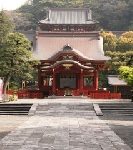
Minamoto no Yoritomo (1147 – 1199), the 1st shogun of the Kamakura Shogunate, worshiped at Tsurugaoka Hachimangu shrine as an authority of Samurai spirit and as the guardian of the nation. The Kamakura Shogunate was the prototype of the Tokugawa Shogunate.
This shrine moved from Yuigo Tsurugaoka, to the present location. The approach to this shrine is called Wakamiya-oji Street, which penetrated almost north and south through the center of Kamakura, and was designed after the model of Suzaku-oji Street in Kyoto.
Kamakura culture was conscious of Kyoto, but was unlike the social culture of the court noble in Kyoto. It preferred Buddhism and plain and simple art, which were easy to understand for the samurai and common people. Kamakura culture also had the influence of Zen culture, from the Song Dynasty (960 – 1279) and the Yuan Dynasty (1279 – 1368) in China.
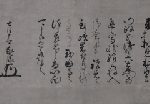
The museum has an excellent collection of modern Japanese painting masters, such as Hashimoto Gaho (1835 – 1908), one of the last to paint in the style of the Kanou school, Yokoyama Taikan (1868 – 1958), and Takeuchi Seiho (1864 – 1942) and others.
This museum possesses the outstanding work, Fubuki, snowstorm, of Ito Shinsui (1898 -1972), who painted Modern beautiful women, books of politicians and philosophers, and books and print works of artist from Shizuoka prefecture, etc. They show works before and after the End of the Edo period and the Meiji Restoration, an event in 1868 that sectored practical imperial rule of the Empire of Japan under Emperor Meiji.
This museum also possesses the Inks of distinguished priest, and “Nakamura Shikibunosho ate”, the note for Nakamura Shikibusho, Nakamura Kazuuji (died 1600) , of which his signature and written seal were the autograph of Tokugawa Ieyasu (1543 – 1616), the founder of the Tokugawa Shogunate.
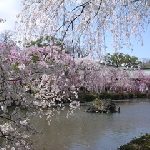
The deity of this shrine is Oyamatsumi no mikoto, a god of mountains, sea and war in Japanese mythology. This shrine was recorded in the old books in the Nara and Heian period, in the 8th – 12th centuries. Minamoto no Yoritomo (1147 – 1199), the 1st shogun of the Kamakura Shogunate, prayed for victory of his raising an army at this shrine and he succeeded. Therefore, the warriors across Japan devoutly worshiped this shrine.
This treasure hall possesses the National Treasure, Umemakietebako, a gold-lacquered box, with the picture of Plum blossoms. This box was designed with written letters of the poem by Hakurakuten (772 – 846), a Chinese poet. The pattern of water flowing in the pond and wild geese in the sky are drawn with gold lacquer, while Plum blossoms and letters are made by silver Hiramon, the technique of stretching metals into thin strips, which are then cut into various shapes to create designs.
This cultural property is extremely elaborate. It is said that Msakao Hojyo, the wife of Minamoto no Yoritomo, dedicated this treasure.
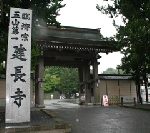
This temple is the first rank of Kamakura Gozan, the five great Rinzai temples of Kamakura, which was founded by Lanxi Daolong (1213 – 1278), a famous Chinese Buddhist monk, calligrapher, and philosopher from the Song Dynasty (960 – 1279), in 1253. This temple was a pure Zen practice place, which was located at an important position of the north entrance to the Kamakura Shogunate capital.
Hojo Tokiyori (1227 – 1263) the 5th Shikken, the Regent of the Kamakura Shogunate, and Shikken Hojo family used this temple for their Zen practice. This complex of temple buildings continues in a straight line, designed after the model of Zen temples in China, to easily keep rubbish from the grounds.
The garden of Hojo, the abbot’s chamber centered on Sapekiike Pnod, at the innermost place, is the same as the precincts designated as National cultural property, which was designed by Lanxi Daolong.
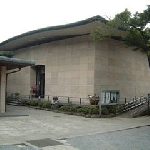
In the Heian period (794 – 1185), this temple was derived from the temple founded by Kobo Daishi Kukai (774 – 835), the founder of the Shingon sect. It was said to the best Zen temple in Izu Province. Shuzenji was named by using the Chinese character of Good, to be pronounced Zen.
In the Kamakura period (1185 – 1333), Lanxi Daolong (1213 – 1278), who was a famous Chinese Buddhist monk from the Song Dynasty (960 – 1279) and founded Kenchoji Temple in Kamakura, converted this to a Rinzai temple, and this temple name spread far and wide to the Chinese Continent, as a place for pure Zen practice.
This treasure hall possesses a Gilt-bronze Single-pronged Vajra, a weapon used as a ritual object, to symbolize indestructibility and irresistible force. It belonged to Kobo Daishi Kukai, the heiress to Minamoto no Yorinori, (1150 – 1193), a half-brother of Minamoto no Yoritomo, the 1st shogun of the Kamakura Shogunate, and a Hannyakyo, Perfection of Wisdom Sutra of Hojo Masako (1156 – 1225), the wife of Minamoto no Yoritomo, the 1st shogun of the Kamakura Shogunate and a political leader, called the “nun shogun”.
This treasure hall also possesses the old mask copied from Minamoto no Yoriie, (1182 – 1204) the 2nd shogun of the Kamakura Shogunate. This mask inspired Shuzenji Monogatari, the tale of Shuzanji, a Japanese drama that tells the story of a mask maker named Yashao.
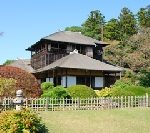
Tokugawa Nariaki (1800 – 1860), the 9th lord of the Mito Domain, contributed to the rise of nationalism and the Meiji Restoration, developed Mt. Shichimensan, facing Senba Lake and landscaped Kairakuen in 1842. He wanted to create a place that brought people in the domain to enjoy together. This Plum Grove of approximately 100 varieties and 3000 plum trees symbolizes the approach to study and research of Mito Mitsukuni (1628 – 1701), Tokugawa Mitsukuni, a grandson of Tokugawa Ieyasu and the 2nd lord of Mito Domain.
Kobun-tei used to be the villa of Nariaki, which is a wooden building with a 2nd and 3rd Floor. Rakujuro, the third floor of Kobun-tei, has a magnificent view of Senba Lake in the southeast. The interior architect was innovative and sophisticated, like carving out the text of old books.
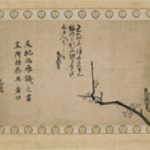
This museum possesses mainly Sunpu Owakemono, relics of Tokugawa Ieyasu (1543 – 1616), the founder of the Tokugawa Shogunate, the paintings of Maruyama Okyo (1733 – 1795) a painter and the founder of Maruyama school of painting, Kanou Tanyu (1602 – 1674), grandson of Eitoku Kanou and one of the foremost Japanese painters, and others. There are about 60,000 items of Joho, the secret ware of the Mito Tokugawa family treasure, transmitted at the Mito Domain.
This museum introduces cultural assets that are sources of insights, handed down by Mito Mitsukuni (1628 – 1701), Tokugawa Mitsukuni, a grandson of Tokugawa Ieyasu, and the second lord of the Mito Domain. Mitsukuni started the compilation project of Dainihonshi, The History of Greater Japan.
This museum also introduces the Gasan, a Plum Tree inscription on a painting, which was create during the generation of Ieyasu’s grandchildren, like Mitsukuni. That collection was the symbol that the Mito Tokugawa family liked to study along the Six Dynasties in China, in the 3rd – 6th centuries.
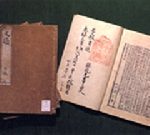
The Ashikaga Gakko School, restored in 1990, is a historic site, which Uesugi Norizane (1411 – 1466), who was appointed as Kanto Kanrei in 1419, as an assistant to Kanto Kubo, donated national treasure books in 1439. Kamakura Kubo, was a title equivalent to a shogun and controlled the Kanto region under the Ashikaga shogunate, from 1349 to 1455.
This school was introduced as ”the largest school in Japan and it is the college of Bando, Kanto area” by Franciso de Xavier (1506 – 1552), who was the co-founder of the Society of Jesus and the first Christian missionary to venture into Japan.
This school has the oldest Confucius’s Mausoleum in Japan and has an experience program for reading a text of Rongo, the Analects of Confucius, aloud without trying to understand it.

This park on the side of Jonuma marsh is located east of Tatebayashi City, which has more than 10,000 azaleas across 50 species. A typical Yamatsuji is a large group of trees that are about 800 years old and 5m high, and are in full bloom from mid April to early May.
In the second park, there is the former villa of the Akimoto family, the last lord of the Tatebayashijo castle, and an iris garden that is in full bloom in June. The old house of Tayama Katai (1872 – 1930): a Japanese author from the area and part of the naturalism school, is also close to this park.

Tocha, a tea-tasting contest, is an elegant competition to recognize the taste differences in teas. It started in the Tang Dynasty (618 – 907) and developed in the Song Dynasty (960 – 1279). Tocha arrived in Japan during the Kamakura period (1185 – 1333) and established the form in the Muromachi Period (1366 – 1573). There was also a competition for the furnishings and the standard of beauty for the Tocha, which also began in the Muromachi Period (1366 – 1573).
Shirakubo flourished as a Market Town in the basin that poured in from the Agatsumagawa River and the Shimagawa River. Shirakubo’s Ochako, a tea event with the same form as Tocha, was described in Onchako Oboecho, a recorded notebook of tea incense in 1799.
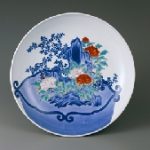
This main building features the garden of wild grasses and flowers and the wall of white lime plaster on a site of 30,000 tsubo, about 10 ha. This museum is a unique museum in the world, which always exhibits about 400 items, focusing on Imari ware and Nabeshima ware that was produced in Japan.
Nabeshima produced from Imari, was particular purpose which was of private use to the lords of the Nabeshima clan, for the offering to the Imperial family, and for the gift to various Daimyo, feudal lords. Nabeshima ware is the most refined ceramics, with a polychrome painting, a symbol of authority.

This museum is located at Kentokusan Erinnji temple, funded by Muso Kokushi (1275 – 1351). It was Bodaiji, the temple with the family grave of Takeda Shingen (1521 – 1573), the feudal lord of Kai Province. Shingen determined that this temple was his Bodaiji. This temple was the source of Shingen’s spirit. This museum exhibits materials related to the Takeda family in Kai Province in the Age of the Provincial Wars in the 15th – 16th centuries.
This museum exhibits the dance fan of Shingen’s favorite which was Nichirin, a drawing of the sun and Japanese white pine with waving Kinun, golden clouds, were drawn in the painting style of Yamato-e, classical Japan decorative paintings, and a gold lacquered saddle with Takeda bishi, the crest of the Takeda family.
This museum introduces Shingen, with rich aesthetic sensitivity, who learned the secret principles of Rinzai Zen. Also, don’t miss the introduction of the 24 Generals of Takeda Shingen, who were celebrated, as the strongest army in the Age of the Provincial Wars in the 15th – 16th centuries.
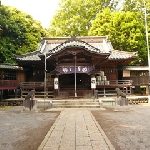
This shrine was transferred the separated spirit from Izumo Taisha shrine Shimane in 859. Ashikaga Shigeuji (1449 – 1455), the Kamakura Kubo, Governor-general of the Kanto region and the first Koga Kubo, the Kanto district administrator, moved to Koga Ibaragi from Kamakura Kanagawa.
He was regarded as the direct descendant of Kamakura Kubo by regional powerful clans in the Kanto district and Koga became the center of northeast Kanto, in the Age of Provincial Wars in the 15th – 16th centuries.
He also worshiped at this shrine as Koga Sochinju, the central place to pray for local gods to found the province and let this shrine be the origin of Koga Kubo’s authority. The origin of the lord’s authority in the province had been handed over to Matudaira Yasunaga (1562 – 1633), the founder of Toda Matsudaira clan and the lord of Koga castle in the Edo period. He built this shrine building and the worship hall.
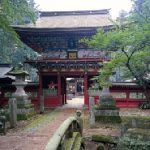
Nasu no Yoichi was a warlord at the end of the Heian period in the 12th century and performed very well in the Genpei War, the battle between the Taira and Minamoto clans. He built the shrine of Tosa cedar in Kochi and dedicated his own long sword in 1187.
Sakanoue no Tamuramaro, the first Shogun, Great General, transferred the separated spirit from Usa Hachimangu shrine here, re-founded this shrine as Kanamaru Hachimangu shrine, and prayed for his victory in the Tohoku, Northern Honshuu, expedition, during the 8th – 9th centuries.
Minamoto no Yoshiie (1039 – 1106), who was the head of the Minamoto clan and the Lord of Mutsu Province, donated the shrine building in gratitude for the victory.
Matsuo Basho (1644 – 1694), the most famous poet of the Edo period worshiped at this shrine in the Genroku era (1688 – 1704), when he journeyed to Mutsu Province.
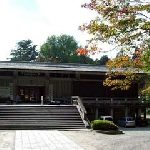
In 1617, the remains of Tokugawa Ieyasu (1543 – 1616), the founder of the Tokugawa Shogunate, was reburied at Tosho shrine in Nikko Tochigi, in accordance with his will.
His wish was that he became the guardian of Hashu, the eight provinces of the Kanto region around Edo.
Nikko, which is located north of Edo, the Shogun capital, was likely symbolic of the polar star. In 1634, Tokugawa Iemitsu, the third shogun (1604 – 1651) made a pilgrimage to the Tosho shrine and started the major construction effort. This shrine was transformed to Toshogu shrine.
Exhibited in the Nikko Toshogu Museum, Nanban, are the Western style Armor that Ieyasu used for the Battle of Sekigahara in 1600, celebrated swords, Osafune Katsumitu・Munemitsu and the legend of Toshou shrine, and drawings of Ieyasu from the siege of Osaka summer campaign of 1615.
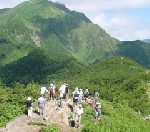
Uesugi Kenshin (1530 – 1578), the feudal lord of Echigo Province, became Kanto Kanrei, a shogunal deputy for the Kanto region in 1561, after his unification of Echigo province, Niigata. The area around Tenjidaira, is surrounded by mountains such as Mt. Tanigawadake (Height 1977m), where an important road, Mikuni Kaido Road connecting the Echigo Province and Kozuke Province, Gunma, has crossed the Mikunitoge Pass since ancient times. Kenshin went over the Mikunitoge Pass a dozen times.
You can enjoy the view of Tenjindaira, on this ropeway, and look at Mt. Tanigawadake, which Kenshin called “the northern guardian deity,” like Bishamonten, the Guardian god of Buddhism.
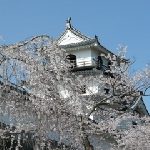
Shiraishijo Castle was restored after the Great East Japan Earthquake of 2011. This castle is located in the center of Shiraishi City, which has, since ancient times, prospered as an important point of entry into Oshu (Northern Honshu, the region encompassing Mutsu and Dewa provinces) from the Kanto region, in East Honshu.
This castle was built on the backdrop of the Zao Mountain Range, and was a place where the Ouetsu-reppan alliance, Alliance of the Domain of Mutsu, Dewa and Echigo, as shogunate forces, was signed during the Boshin War (1868-1869), the Japanese civil war between Imperial and shogunate forces. The Reppan conference, a conference of many feudal clans was held at this castle for the petition for mercy to the Aizu Domain and the Shonai Domain.
The conference was called by Otsuki Bankei (1801 – 1878), a Chinese scholar, who was the son of Otsuki Gentaku (1757 – 1827), a Dutch scholar and known as the father of modern science in Japan. Bankei was a controversialist of Sendai Domain, Miyagi, Mutsu Province. The Domains of Mutsu, Dewa and Echigo formed the alliance with Rinoji no Miya, the imperial Abbot of Nikko, as its leader.
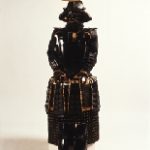
This museum possesses about 98,000 items, mainly cultural assets from the Date family, which is located at the site of Sendaijo castle’s third bailey.
The armor has an impressive crest in a crescent shape. Its body armor was made of 5 black-lacquered iron plates, and 9 tassets, made of six plates. Its helmet is a Sixty-two Plate Riveted Suji Kabuto Helmet, with an inscription reads “Munehisa”. It is elegant and fashionable, and it is exactly Omote Dogu, official utensils for Datemono, dandy, Date Masamune (1567 – 1636), a Japanese feudal lord, the founder and the first lord of Sendai Domain.
Successive feudal lords of Sendai Domain, and retainers had followed this style, and the black-lacquered armor with 5 pieced cuirass is also called the Sendai Body Armor.
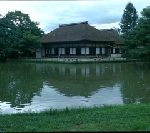
Yubikan was restored after the Great East Japan Earthquake of 2011. O-aratame-dokoro, the main building was built with a thatched roof and contained a Shoin, drawing room, that was the place of study. Date Masamune (1567 – 1636), a Japanese feudal lord, the founder and the first lord of the Sendai Domain, used to stay at Iwadeyama, a castle of the feudal lord. After Masamune moved to Sendai Castle, Iwadeyama was ruled by a family of the Date clan in the Sendai Domain.
The main building was a place of study for the children of the retainer of the Iwadeyama Date family. The garden, which garden was developed later, has a path around a central pond, borrowed from the landscape of Iwadeyama Castle Honmaru, the keep of the castle Cliff. Apare, admirable.

Fukushima City is located between the Ou Mountains and the Abukuma Mountains, which was the castle town of the Honda Clan in the Edo period (1603 – 1868). The Honda Clan were Hereditary feudal lords and retainers who supported the Tokugawa Shogunate.
This garden conveys the aesthetic of a pure Japanese garden, which imitates Kitayama Culture, the Ashikaga Shogunate’s culture, influenced by the Ming dynasty (1368 – 1644), at the beginning of the the Muromachi Period (1366 – 1573).
This garden is a huge, 25,000 m2, Japanese style garden, with a path around a central pond. It is composed mainly of Akamatsu, Japanese red pine, Goyomatsu, Japanese white pine, and stones and took more than 10 years to complete. While listening to the voices of wild birds, seasonal flowers create the innocent landscape.

The approach to this temple is one of the finest rows of cedar trees in the Tohoku region. These large cedars have a diameter of more than 2m and reach about 300m to the gate. In front of the main temple is a 460 year old maple tree, called Kasa Kede. It has branches in the shape of an umbrella. Kujijo Castle was built on the eastern hillock of this temple.
The lord of Kujijo Castle, Kuji Naoharu, and his son Kuji Masanori were executed by the army of Toyotomi Hideyoshi (1537 – 1598), the powerful feudal lord and Imperial Regent who unified Japan, in the Rebellion of Kunohe Masazane (1536 – 1591) in 1591, who was the lord of Kunohejo Castle.
However, it is reported that Naoharu ‘s uncle got away to Tsugaru Province, Aomori, when he was young, and he became Tsugaru Tamenobu (1550 – 1608), a feudal lord, the 1st feudal lord of Tsugaru Domain, and his former name was Oura Tamenobu. Oura Tamenobu. was the fifth generation of Oura Mitsunobu (1460 – 1526), a lord of Tanesatojo Castle and a founder of Tsuruga Domain.
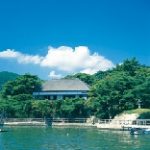
Kanran-tei has a tea room that was inherited from Fushimijo Castle of Toyotomi Hideyoshi (1537 – 1598), the powerful feudal lord and Imperial Regent who unified Japan, to Date Masamune (1567 – 1636), a Japanese feudal lord, the founder and the first lord of Sendai Domain. Masamune was a deep thinker, and his style was liquid grace and exceptional. He was an educated person who left excellent work at the poetry party.
The Date family built Kanrantei, a lodging and entertainment facility on the coast, for the lords to use in the Matsushima sightseeing, by inheriting the culture of Masamune. In the splendid space, they made poetry while enjoying the view over the sea and the moon moving with time passing.

The Uesugi family had its possessions reduced to a quarter, after the Battle of Sekigahara in 1600, by Tokugawa Shogunate Tokugawa Ieyasu (1543 – 1616), the founder of the Tokugawa Shogunate. Uesugi’s family and followers crossed the Hibaratoge Pass. They built Rinsenji Temple at the south of Yonezawajo Castle in 1617, as the Uesugi’s family temple, which was modeled after Rinsenji Temple in Echigo Province.
This temple’s garden is a splendid landscaped by Shatsukei, borrowing the landscape of all four slopes, which is like the foot of Mt. Kasugayama. This garden conveys the aesthetic sense of Uesugi Kenshin (1530 – 1578), the feudal lord of Echigo Province, like a source of innocence.
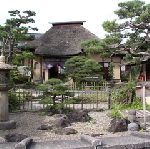
In 1629, Emperor Go-Mizuno (1596 – 1680), gave the highest honor, a purple robe of a Buddhist priest, to an elder of Taitokuji Temple in Kyoto, Takuan Zenji (1573 – 1645) , a major figure in the Rinzai school of Zen. That angered the Tokugawa Shogunate, as it was seen as ignoring the authority of the Shogunate. Takuan was exiled from Kyoto for 3 years here.
The lord of Kaminoyama Domain, was impressed by Takuan’s personality and donated a thatched hut, Harusame-an, to him. Takuan, who composed poems and understood well the esprit of poetry, loved Harusame-an. Its thatched roof and its garden reminds us of the image of Takuan.

Tsurugajo Castle in Aizu-Wakamatsu City is a fine castle that survived a fierce, one month during the Boshin War (1868-1869), the Japanese civil war between Imperial and shogunate forces. Gamo Ujisato (1556 – 1595), a feudal lord who was both a good warrior and a good scholar, developed the castle town, built a castle tower, and founded this castle. There is a tea-ceremony room within the wall of a castle.
Ujisato was the leader of Rikyu shichitetsu, the seven disciples of Sen no Rikyu(1522 – 1591)the greatest tea master and the tea master to the military dictator of Japan, Oda Nobunaga and Toyotomi Hideyoshi. Rikyu invented the wabi-sabi style of tea ceremony. After Rikyu committed suicide, Ujisato sheltered Rikyu’s son, Shoan and labored to rehabilitate the Sen family. It was told that Shoan designed the tea-ceremony room for Ujisato.
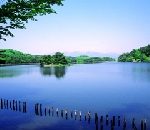
Shirakawa was one of the three ancient barriers of Oshu (Northern Honshu, the region encompassing Mutsu and Dewa province). Shirakawa barrier which was the border and barrier of Mutsu Province, became famous as a place with poetical associations, during the Nara period (710 – 794) and Heian period (794 – 1185). Many poets wrote poems with Shirakawa barrier.
Nanko Lake was built in 1801 by the master of landscape gardener and a wise ruler, Matsudaira Sadanobu (1759 – 1829), who was a lord of Shirakawa Domain, and chief senior councilor of the Tokugawa shogunate from 1787 to 1793. Sadanobu raised the policy of enjoying together without any class, and let the park open to the pubic sometime.
Japanese Waka poetry and Chinese poems are attached to the 17 scenic spots in the park, by which the days of Sadanobu are brought to mind.
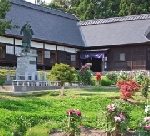
The Tsugaru Peninsula was ruled by the Ando clan, a descendant of Abe Sadato (1019 – 1062) from the Kamakura period (1185 – 1333). Their hometown was Tosa Minato, Harbor, which traded with the Korean peninsula and Chinese continent and was lined with Hakata Minato, Harbor Fukuoka. Oura Mitsunobu (1460 – 1526) came to Tanesato with 36 samurai from Nabu Shimo Kuji, Iwate. He was a lord of Tanesatojo Castle and a founder of Tsuruga Domain.
He built a castle in the mountainous region of Ajigasawa Town, and achieved the unification of Tsugaru Province through difficult battles. Mitsunobu wearing his armor was buried at the site of Tanesatojo Castle, facing southeast, the direction of Kuji, Iwate Prefecture.
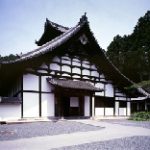
Date Masamune (1567 – 1636), the founder and the first lord of the Sendai Domain, rebuilt Enpukuji Temple in 1609. The temple was founded by Jigaku Daishi Ennin (794 – 864), the 3rd head of Buddhist Tendai sect, in the Heian period (794 – 1185). Masamune made this temple his family’s grave, with the name of Zuiganji Temple.
Masamune also rebuilt Godaido, the Hall dedicated to the five Guardian Kings of Buddhism. It was situated along the sea, using the best of architectural techniques in the Azuchi-Momoyama period (1573 – 1603) and enshrines Godai Myoo, the five Guardian Kings of Buddhism, made by Ennin.
Sakyo Kanou, a painter with a Sendai feudal clan, painted Kujiaku no ma, the room with the sliding screen painting of a peacock, which expels an evil atmosphere, with a tail raised on the gold ground and a slightly twisted body. The sliding screen painting was drawn with both the glow of gold clouds and the ultramarine blue of Matsushima Bay.
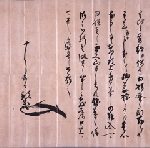
This museum introduces the history and culture of the Tenchijin, heaven, earth and man, the three basic elements of the cosmos. Uesugi Kagekatsu (1556 – 1623) a feudal lord, the adopted son of Uesugi Kenshin, and Naoe Kanetsugu (1559–1620), a senior retainer of Uesugi clan, who served Uesugi Kenshin and Uesugi Kagekatsu.
This museum also exhibits the original screen of the National Treasure Rakuchu Rakugai folding screen, painted both inside and outside Kyo, the Kyoto capital. The Uesugi version, painted by Kanou Eitoku (1543 – 1590), one of the most influence Japanese painters, and a head of the Kanou school of Japanese painting, is usually shown twice a year in spring and autumn.
Old documents handed down to the Uesugi family, the lords of Yonezawa Domain are called the national treasure Uesugi Documents. This letter was written by Uesugi Kenshin (1530 – 1578), the feudal lord of Echigo Province, which was sent to Nagao Masakage (1526 – 1564) a samurai, the brother-in law of Uesugi Kenshin. Masakage was the rival of Kenshin in the clan. This letter was sent at the timing of the Battles of Kawanakajima, after unifying Echigo Province.This letter conveyed tenure to Masakage who dispatched troops to the battle.
It is a document that tells the scene of Samurai in the Age of Provincial Wars in the 15th – 16th centuries, fought between the two clans.
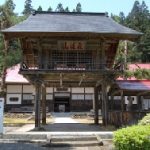
Aizu eventually became one of the Five-Butsuto, a thriving Buddhist city, after Tokuitsu (749 – 824) introduced Buddhism to Aizu, in the Heian period (794 – 1185). He was a scholar-monk who founded many temples in northeastern Japan. This temple in Kitakata City was built as a Shingon sect temple in the beginning of the Heian period. This temple was converted to the Soto sect in 1375 by Genno Zenji (1329 – 1400), a monk of the Soto school of Zen Buddhism, and became the head temple of the 37 temples.
The main gate is a magnificent and tidy, Shikyaku mon, a gate building with four standing pillars in front of and behind the gate pillar. This influenced the style of the Azuchi-Momoyama period (1573 – 1603). The Kannon-do: temple dedicated to Kannon, the Buddhist Goddess of Mercy, has gorgeous reliefs, which are carved with rising dragons, elephants, and lions. You can feel the history of Buddhist faith.
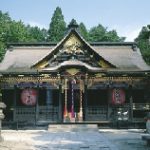
The shrine building is Ishinoma Zukuri, with an integrated main hall and worship hall, connected by a low building called the Ishinoma, stone-room. The appearance of this shrine combines the richly colored white pigments of brackets and sculptures with the black-lacquer. The elaborated designs of this shrine building, made by the greatest craftsmen of the day, were later passed down to the World Heritage Nikko Toshogu shrine, Nikko Tochigi.
The worship hall has a wall painting of Karajishi, an artistic portrait of a lion, by Sakuma Sakyou (1581 – 1657). Sakuma was the purveying painter to the Sendai clan, who worked in the Kujiaku no ma, the room with the sliding screen painting of a peacock, at Suiganji temple, Miyagi. The interior of the worship hall still conveys the culture of Azuchi-Momoyama period (1573 – 1603).
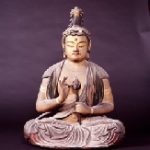
Johoji Temple at Mt. Buchisan, rock mountain was the practice place of Tokuitsu (749 – 824), a scholar-monk who founded many temples in northeastern Japan. He also founded Aizu, as Butsuto, a thriving Buddhist city. The sedentary statue of Sacred Kannnon, the Buddhist Goddess of Mercy is enshrined at this temple, which has a 77cm height, in Yosegi zukuri, the technique of wood block assembly, after being treated and craved, made of cypress wood. This statue has Gyokugan, eyes made of crystal, and is painted with Kindei, gold paint with gelatin.
This statue was carved in the sculpture style of the early Kamakura period in the 13th century, with the influence of the Song Dynasty (960 – 1279) style. This statue was imaged in 1311 by Minagawa Munekage in Moka Naganuma Villa, Tochigi. He was a member of Naganuma family which was Gokenin, vassals in the Kamakura Shogunate. This statue symbolizes the Buddhist culture of the Tadami region.
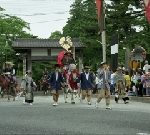
Soma Nomaoi is said to have been started by the Nomaoi Event, a wild horse chase festival of Taira no Masakado (died 940), a member of the Kammu Taira clan and one of the largest insurgent forces against the central government of Kyoto. That event was a training effort to improve martial arts and spirit. This event was supported by samurai spirit in the old days, and gratitude spirit now.
The Soma clan of Nomura Domain were descendants of Masakado. The Soma clan was a small Domain. The Date clan, next to Soma, was a great Domain. They had always worked in the field beside their armor. Once they heard of the enemy’s invasion, they solidified their unity. They had never neglected mental training, from study to etiquette, and thrived in the spirit of Bushido, samurai spirit.
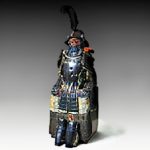
The museum opened in 2019 and took over the cultural properties of the Date City Development Memorial Hall, which closed. Date city was developed in 1871 by the mass immigrants of a family of Sendai Domain, a lord of Watari, Date Kunishige (1841 – 1904), and his vassal. Many fine arts and treasure of Japanese feudal lords’ belongings were sold to raise development funds, but they kept some items to convey to the next generation.
The museum exhibits valuable items from the Watari Date family, such as Omote Dogu, official utensils of the samurai family, like armor and swords, and Daimyochodo, Japanese feudal lords’ furnishings, like the dolls that depict the imperial court, in the Edo period (1603 – 1868), along with valuable materials related to development.
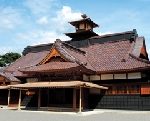
The Hakodate magistrate’s office, was established by the Tokugawa Shogunate in Edo when the Shogunate opened Hakodate Port at the End of the Edo period (1603 – 1868). It was built in Goryokaku, and became the center of the governance of Ezo, Hokkaido. Goryokaku became the site of the last battle of the Boshin War (1868-1869), the Japanese civil war between Imperial and shogunate forces. The Hakodate magistrate’s office building was dismantled by the Hokkaido Development Commissioner in 1872.
The first election in Japan was held by the former Shogunate forces aiming for the Republic of Hokkaido. The office restored in 2010 tells our mind the history.
